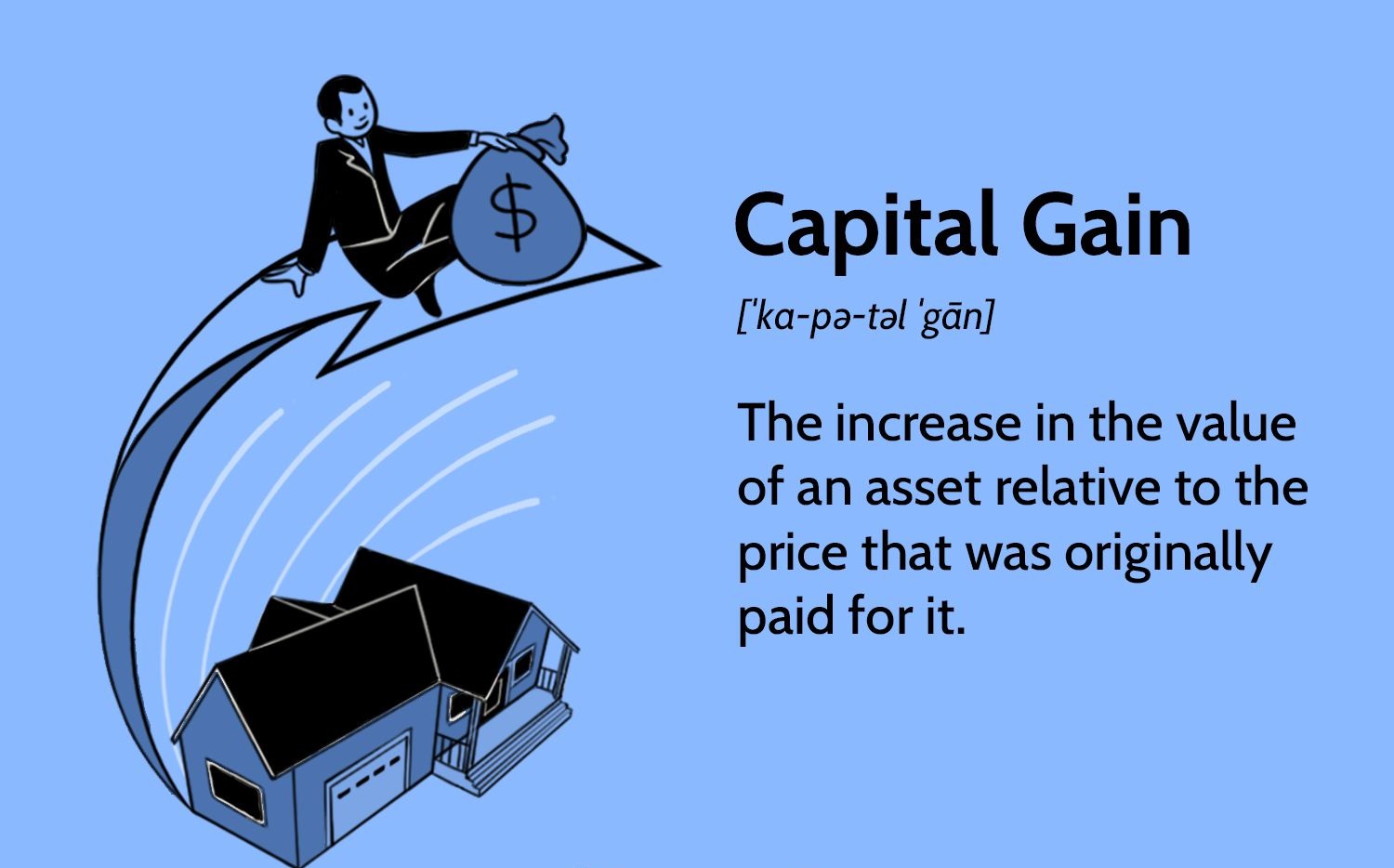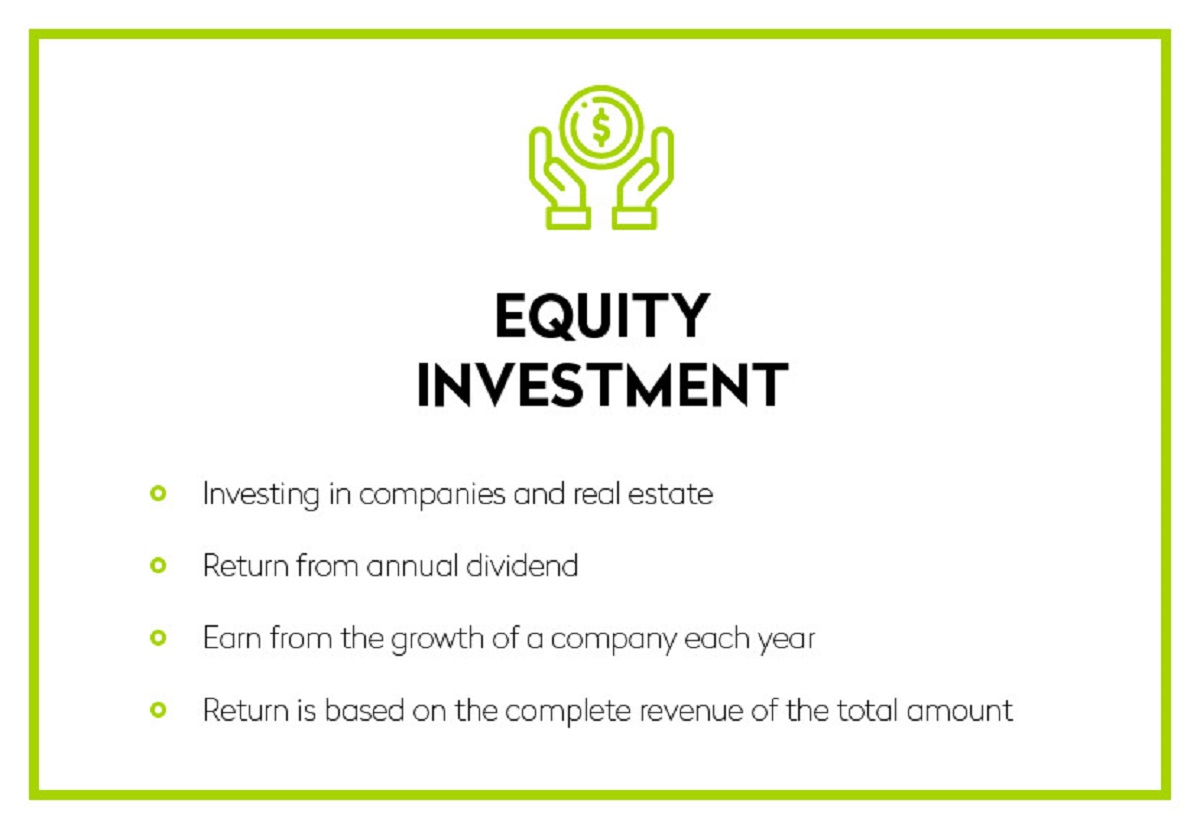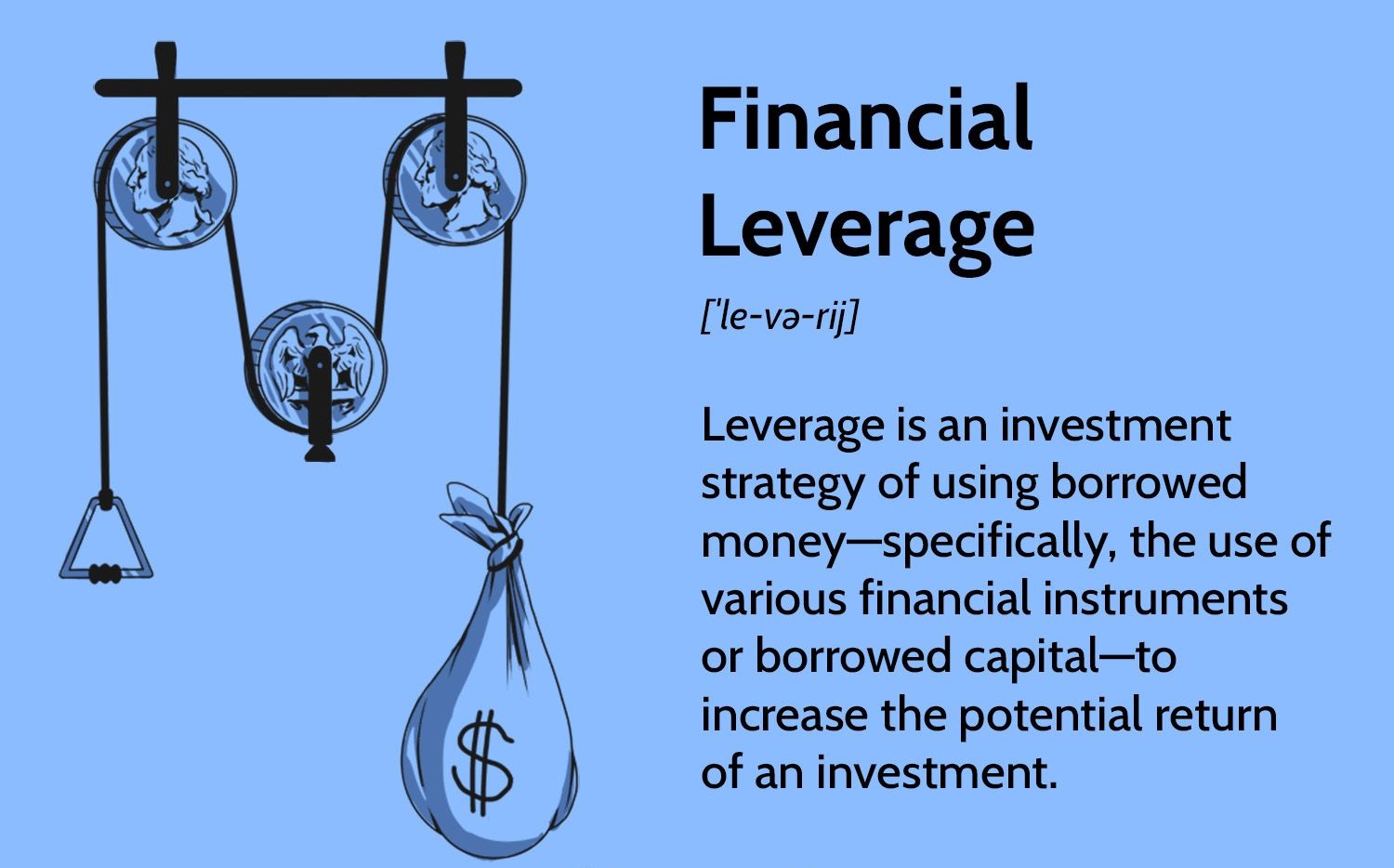Introduction
Welcome to the world of fintech, where technology and finance intertwine to shape the future of financial services. The fintech industry has experienced significant growth in recent years, transforming the way we save, invest, borrow, and manage our money. With new players entering the market and disruptive technologies emerging, it has become essential for fintech companies to implement effective marketing strategies to stand out in the crowd.
In this article, we will explore the key steps and techniques to successfully market a fintech company, ensuring visibility, brand recognition, and customer engagement. Whether you are a startup or an established player in the industry, these marketing insights will help you drive meaningful results and achieve your business goals.
Before diving into the marketing strategies, let’s first gain a better understanding of the fintech industry and its unique characteristics. Fintech, short for financial technology, encompasses a wide range of businesses that leverage technology to provide innovative financial products and services. From mobile banking apps and digital payment platforms to cryptocurrency exchanges and robo-advisors, the fintech landscape is vast and diverse.
The rise of fintech can be attributed to various factors, including the increasing adoption of smartphones, the growing demand for seamless digital experiences, and the desire for more accessible and inclusive financial services. Fintech companies combine cutting-edge technology, data analytics, and user-centered design to create solutions that are faster, more convenient, and more personalized than traditional financial institutions.
However, with the rapid growth of the industry comes intense competition. To effectively market your fintech company, you need to have a deep understanding of your target audience, build a strong brand identity, and develop a comprehensive digital marketing strategy that encompasses various channels and tactics.
In the following sections, we will explore each of these aspects in detail, providing practical tips and best practices to help you succeed in the competitive fintech landscape.
Understanding the Fintech Industry
Before diving into the marketing strategies, it is crucial to have a solid understanding of the fintech industry. Fintech, short for financial technology, refers to the integration of technology and finance to deliver innovative financial products and services. This rapidly evolving sector encompasses a wide range of businesses, including mobile banking apps, peer-to-peer lending platforms, cryptocurrency exchanges, and robo-advisors.
One of the key drivers behind the rise of fintech is the increasing adoption of digital technologies. The widespread use of smartphones and the internet has made it easier for people to access financial services and manage their finances on the go. Traditional financial institutions are also embracing digital transformation to stay competitive and meet the changing expectations of their customers.
Fintech companies are disrupting the traditional financial landscape by offering solutions that are more convenient, accessible, and tailored to individual needs. They leverage technologies such as artificial intelligence, blockchain, and data analytics to automate processes, improve efficiency, and enhance the customer experience.
Another significant factor contributing to the growth of the fintech industry is the shift in consumer behavior and preferences. The younger generation, in particular, has demonstrated a preference for digital solutions and a willingness to adopt new technologies. They value convenience, speed, and transparency and are open to exploring alternative financial options beyond traditional banks.
Furthermore, fintech has the potential to address financial inclusion by providing services to underserved populations who have limited access to traditional financial institutions. Through mobile banking, for example, individuals in remote areas can access basic financial services and participate in the digital economy.
Understanding the fintech landscape and the dynamics at play is essential for successfully marketing your fintech company. It allows you to identify your unique selling points, target the right audience, and position your brand effectively. By keeping up with the latest trends, technologies, and regulatory developments in the industry, you can stay ahead of the competition and capitalize on emerging opportunities.
As we delve into the marketing strategies for fintech companies, keep in mind the distinctive characteristics of the industry and the evolving needs and expectations of your target audience. By aligning your marketing efforts with the dynamics of the fintech industry, you can create a compelling brand narrative that resonates with your audience and drives business growth.
Defining Your Target Audience
One of the fundamental steps in marketing a fintech company is defining your target audience. To effectively promote your products and services, you need to understand who your ideal customers are and what their needs, preferences, and pain points are. This knowledge will enable you to tailor your marketing messages and strategies to resonate with your target audience and drive meaningful engagement.
When defining your target audience, consider factors such as demographics, psychographics, and behavior patterns. Start by analyzing your existing customer base to identify common characteristics and segments. Look at factors like age, gender, location, income level, and occupation to create demographic profiles.
Psychographic factors are equally important in understanding your audience. Consider their attitudes, values, interests, and lifestyles. Are they tech-savvy individuals who embrace digital solutions, or are they more traditional in their financial habits? Understanding their motivations and aspirations will help you craft messages that appeal to their specific desires.
Furthermore, analyze the behavior patterns of your target audience. How do they currently manage their finances? Are they open to adopting new technologies, or do they prefer more traditional approaches? Understanding their behaviors and pain points will allow you to position your fintech solutions as the answer to their needs and challenges.
Another strategy to identify your target audience is conducting market research. Utilize surveys, focus groups, and data analytics to gather insights on consumer preferences, behaviors, and expectations. This research will provide you with valuable data to create customer personas, which are fictional representations of your ideal customers. These personas will guide your marketing efforts and help you tailor your messages and content to different segments of your target audience.
It is important to note that the fintech industry caters to various customer segments, ranging from tech-savvy millennials seeking convenient mobile banking solutions to small businesses looking for streamlined payment processing. Therefore, it is crucial to identify and target specific niches within the broader fintech market to maximize the effectiveness of your marketing efforts.
By defining your target audience accurately, you can focus your marketing resources on the channels and strategies that will have the greatest impact. From personalized email campaigns and targeted social media advertising to content marketing and strategic partnerships, having a clear understanding of your audience allows you to reach them in the most efficient and effective way possible.
Building a Strong Brand Identity
In a crowded fintech landscape, building a strong brand identity is crucial for differentiation and creating a lasting impression on your target audience. A strong brand identity not only helps you stand out from the competition but also establishes trust, credibility, and loyalty among your customers. Here are key strategies to consider when building your fintech company’s brand identity:
1. Define Your Brand Values and Personality: Start by clarifying the core values and mission that drive your company. What do you want to be known for? Identify the unique characteristics of your brand and the personality traits that resonate with your target audience. Whether it’s innovation, simplicity, transparency, or security, your brand values should be aligned with the emotional and practical needs of your customers.
2. Develop a Memorable Logo and Visual Identity: Your brand’s visual identity is the face of your company. Design a visually appealing and memorable logo that represents your brand’s essence. Make sure it is versatile and can be used across various marketing channels and platforms. Develop a consistent visual language that includes colors, fonts, and imagery, reinforcing your brand identity and creating a cohesive brand experience.
3. Craft a Compelling Brand Story: People connect with stories, and a well-crafted brand story can create an emotional bond with your audience. Share the journey, vision, and passion behind your fintech company. Highlight how your products or services address specific pain points or fulfill key needs. Your brand story should resonate with your target audience, showcasing the value you bring to their lives.
4. Provide Exceptional Customer Experiences: Delivering exceptional customer experiences is a powerful way to build a strong brand identity. Every interaction a customer has with your company should reflect your brand’s values and personality. From user-friendly interfaces and prompt customer support to personalized recommendations and seamless transactions, prioritize creating positive experiences at every touchpoint.
5. Consistent Messaging Across Channels: Consistency is key when it comes to building a strong brand identity. Ensure that your messaging is consistent across all marketing channels – website, social media, blogs, email campaigns, etc. Use the same tone of voice, brand language, and key messages to create a cohesive brand experience and reinforce your brand identity consistently.
6. Engage with Your Audience: Building a strong brand identity also involves actively engaging with your audience. Utilize social media platforms, webinars, events, and other relevant channels to interact with your customers. Respond to their queries, address their concerns, and listen to their feedback. This shows that you value their opinions and builds trust and credibility in your brand.
7. Evolve with the Industry: The fintech industry is dynamic, characterized by rapid innovation and changing customer needs. Stay up to date with the latest trends, technologies, and regulations in the industry. Continuously evolve your brand identity to align with the evolving needs and expectations of your target audience. Flexibility and adaptability will ensure your brand remains relevant and competitive.
Building a strong brand identity takes time and effort, but it is an investment that pays off in the long run. A well-defined brand identity will establish your fintech company as a trusted and respected player in the market, leading to increased customer loyalty and business growth.
Developing a Digital Marketing Strategy
In today’s digital age, a comprehensive digital marketing strategy is essential for the success of your fintech company. Digital marketing allows you to reach a wider audience, engage with potential customers, and drive conversions. Here are key steps to consider when developing your fintech company’s digital marketing strategy:
1. Set Clear Goals: Start by defining your marketing goals. Are you looking to increase brand awareness, generate leads, drive website traffic, or boost conversions? Set specific, measurable, achievable, relevant, and time-bound (SMART) goals that align with your business objectives. These goals will guide your digital marketing efforts and help you measure success.
2. Understand Your Target Audience: Building on the earlier section, it’s crucial to understand your target audience in terms of their demographics, interests, online behavior, and preferred channels. This information will help you determine the most effective methods of reaching and engaging your audience. Utilize tools like Google Analytics and customer surveys to gather valuable insights about your audience.
3. Create a Conversion-Centered Website: Your website serves as the foundation of your digital presence. Ensure that your website is user-friendly, visually appealing, and optimized for conversions. Utilize clear and compelling call-to-action buttons, intuitive navigation, and persuasive copy. Implement SEO best practices to improve your website’s visibility and organic search rankings.
4. Implement Content Marketing: Content marketing plays a crucial role in establishing your fintech company as a thought leader and attracting organic traffic. Develop a content strategy that includes blog posts, whitepapers, infographics, videos, and case studies. Create informative and valuable content that addresses the pain points and interests of your target audience. Promote your content through social media, email marketing, and guest blogging to expand your reach.
5. Leverage Paid Advertising: Paid advertising channels such as Google Ads and social media advertising can help you reach a wider audience quickly. Develop targeted campaigns based on the characteristics and preferences of your audience. Utilize keywords relevant to your fintech products or services, create compelling ad copy, and monitor your campaigns closely to optimize performance.
6. Embrace Social Media Marketing: Social media platforms provide an excellent opportunity to engage with your audience, build brand awareness, and drive website traffic. Identify the platforms where your target audience is most active and create a social media strategy accordingly. Share informative content, engage in conversations, and utilize paid advertising options to expand your reach.
7. Implement Email Marketing: Email marketing allows you to nurture leads, build customer relationships, and drive conversions. Develop personalized and targeted email campaigns based on user behavior, preferences, and lifecycle stages. Offer valuable content, exclusive offers, and personalized recommendations to keep your audience engaged and encourage them to take action.
8. Analyze, Optimize, and Iterate: Regularly monitor and analyze the performance of your digital marketing efforts. Utilize tools like Google Analytics to track website traffic, conversion rates, and user behavior. Identify areas of improvement, optimize your strategies, and iterate based on the data. Continuously testing and refining your digital marketing tactics will lead to better results over time.
Remember, developing a digital marketing strategy is an ongoing process. The digital landscape is dynamic, and consumer behaviors and preferences constantly evolve. Stay informed about the latest trends, technologies, and best practices in digital marketing to ensure that your fintech company remains competitive and achieves its marketing goals.
Content Marketing for Fintech
Content marketing is a powerful tool for establishing your fintech company as an industry thought leader, building brand awareness, and attracting and engaging your target audience. By providing valuable and relevant content, you can showcase your expertise, address common pain points, and position your brand as a trusted resource. Here are key strategies to consider when implementing a content marketing strategy for your fintech company:
1. Understand Your Audience: As with any marketing strategy, understanding your target audience is crucial for effective content marketing. Identify their interests, challenges, and information needs. What are their financial goals? What topics would resonate with them? Conduct keyword research and utilize customer surveys to gain insights into the content topics and formats that will resonate with your audience.
2. Develop a Content Strategy: A well-defined content strategy is essential to guide your content marketing efforts. Determine the types of content that align with your audience’s preferences, industry trends, and your brand objectives. Consider creating a mix of informative blog posts, engaging videos, informative whitepapers, and insightful case studies. Generate content ideas based on common questions, industry news, or emerging trends.
3. Educate and Inform: Fintech is a complex industry, and many consumers may not fully understand the concepts and benefits of the innovative solutions you offer. Use your content to educate and inform your audience about the advantages and functionalities of your fintech products and services. Break down complex concepts into easy-to-understand explanations, providing practical tips and actionable advice along the way.
4. Showcase Thought Leadership: Position your fintech company as a thought leader by sharing industry insights, trends, and predictions. Publish original research, whitepapers, and reports that highlight your expertise. This not only demonstrates your knowledge but also builds trust and credibility among your audience. Be consistent in delivering high-quality, informative content to establish yourself as a trusted source of industry insights.
5. Leverage Visual Content: In addition to written content, utilize visual mediums such as infographics, videos, and interactive content to engage your audience. Visual content tends to be more engaging and shareable, making it effective in capturing and holding your audience’s attention. Use visuals to simplify complex ideas, present data in an easily digestible format, and tell compelling stories.
6. Optimize for Search Engines: Implement Search Engine Optimization (SEO) techniques to ensure your content ranks higher in search engine results pages. Conduct keyword research to identify relevant search terms and incorporate them naturally into your content. Optimize meta tags, headings, and alt tags to improve organic visibility. Regularly create fresh, informative content to boost your search rankings and attract organic traffic.
7. Promote Your Content: Creating high-quality content is just the first step. To maximize its reach, actively promote your content through various channels such as social media, email marketing, and guest blogging. Utilize social media platforms to share snippets, quotes, and links to your articles. Consider collaborating with influencers or partnering with other industry publications to reach a wider audience.
8. Measure and Analyze: Regularly track the performance of your content marketing efforts using analytics tools. Monitor metrics such as website traffic, engagement, conversion rates, and social media shares. Use this data to identify high-performing content, understand audience preferences, and refine your content strategy. Adjust your approach based on the insights gained to continuously improve the effectiveness of your content marketing efforts.
By implementing a thoughtful and targeted content marketing strategy, you can establish your fintech company as a trusted source of information, engage your audience, and drive meaningful business results. Remember to consistently deliver valuable and relevant content that aligns with your audience’s needs and preferences, and adapt your strategy based on data and industry trends.
Utilizing Social Media Platforms
Social media platforms have revolutionized the way businesses connect with their audience, and for fintech companies, they present valuable opportunities to engage with customers, build brand awareness, and drive website traffic. To effectively utilize social media for your fintech company, consider the following strategies:
1. Choose the Right Platforms: Start by identifying the social media platforms that align with your target audience and business objectives. Facebook, Twitter, LinkedIn, and Instagram are popular choices for fintech companies, but you should research which platforms your audience is most active on and tailor your strategy accordingly.
2. Create a Consistent Brand Presence: Establish a strong and consistent brand presence on social media platforms. Use your company logo as the profile picture and develop a visually appealing cover photo that represents your brand. Ensure that your social media profiles are fully filled out with accurate and up-to-date information about your company.
3. Engage and Interact with Your Audience: Social media is all about building relationships and engaging with your audience. Respond promptly to comments, messages, and mentions. Encourage conversation by asking questions and soliciting feedback. Show appreciation for positive feedback and address any concerns or complaints in a timely and professional manner.
4. Share Valuable Content: Share informative and engaging content that adds value to your audience’s financial journey. This can include articles, blog posts, videos, infographics, and relevant industry news. Develop a content calendar to schedule relevant posts and maintain a consistent flow of valuable content.
5. Utilize Paid Advertising: While organic reach on social media platforms is limited, paid advertising allows you to reach a wider audience and target specific demographics. Develop targeted ad campaigns that align with your business objectives and audience segments. Utilize ad formats like promoted posts, sponsored content, and lead generation ads to maximize your reach and results.
6. Collaborate with Influencers: Partner with influencers in the fintech and finance industries to expand your reach and credibility. Identify influencers who align with your brand values and have a loyal following. Collaborate on content creation, sponsored posts, or contests to tap into their audience and drive engagement for your brand.
7. Stay Up to Date with Trends and Regulations: The fintech industry is dynamic, and social media platforms evolve rapidly. Stay informed about the latest trends in social media marketing and adapt your strategies accordingly. Additionally, keep track of any regulations or compliance requirements related to your industry to ensure your social media activities adhere to legal guidelines.
8. Track and Analyze Performance: Utilize analytics tools to measure the performance of your social media efforts. Monitor metrics such as engagement, reach, clicks, and conversions. Analyze which types of content and strategies are resonating with your audience and adjust your approach accordingly. Regularly assess the effectiveness of your social media activities to optimize your efforts and drive better results.
By effectively utilizing social media platforms, you can amplify your brand’s visibility, build meaningful connections with your audience, and drive traffic to your website. Remember to tailor your content and strategies to each platform, engage with your audience, and constantly monitor and refine your approach based on performance data and industry trends.
Search Engine Optimization (SEO) for Fintech
Search Engine Optimization (SEO) plays a vital role in improving your fintech company’s visibility in search engine results and driving organic traffic to your website. Implementing effective SEO strategies can help your fintech company reach a wider audience and attract potential customers who are actively searching for financial products and services. Here are key strategies to consider when optimizing your fintech website for search engines:
1. Keyword Research: Conduct thorough keyword research to identify the relevant search terms and phrases that your target audience is using. Focus on long-tail keywords that are specific to your fintech offerings. Incorporate these keywords naturally into your website content, including your headlines, subheadings, meta tags, and image alt tags.
2. Quality Content Creation: Develop high-quality, informative, and engaging content that provides value to your audience. Craft blog posts, user guides, and helpful articles that address commonly searched queries and topics related to your fintech products or services. Ensure that your content is well-structured, easy to read, and optimized for relevant keywords.
3. On-Page Optimization: Optimize your website’s on-page elements to improve its visibility in search engine results. This includes optimizing your title tags, meta descriptions, and URL structure with relevant keywords. Use header tags (H1, H2, etc.) to structure your content and make it easier for search engines to understand.
4. Mobile-Friendly Design: As more people access the internet through mobile devices, having a mobile-friendly website is crucial. Ensure that your website is responsive and provides a seamless user experience across different screen sizes. Page load speed is also an important factor, so optimize your website’s performance to provide a fast and smooth experience for users.
5. Technical SEO: Pay attention to technical aspects of SEO to ensure search engines can crawl and index your website effectively. Optimize your website’s XML sitemap, robots.txt file, and internal link structure. Use structured data markup to enhance the visibility of your website in search results with rich snippets and other SERP features.
6. Link Building: Earn high-quality backlinks from reputable websites in the fintech and finance industry. Develop a link-building strategy that focuses on building relationships, creating valuable content, and reaching out to relevant influencers and publications. Quality backlinks can improve your website’s authority and visibility in search engine rankings.
7. Local SEO: If your fintech company serves specific geographical areas, optimize your website for local SEO. Claim and optimize your Google My Business listing, ensure your NAP (name, address, phone number) information is consistent across online directories, and encourage customer reviews. Utilize location-specific keywords in your content and metadata to improve your visibility in local search results.
8. Regular Monitoring and Analysis: Regularly monitor your website’s performance using tools like Google Analytics and Google Search Console. Track your organic search traffic, rankings, and user behavior to understand what is working and identify areas for improvement. Make data-driven decisions to refine your SEO strategies and better align with your target audience’s search behaviors.
Implementing effective SEO strategies for your fintech company requires ongoing effort and monitoring. Stay updated with the latest trends and algorithm changes in the search engine industry to adapt your strategies accordingly. By investing in SEO, you can enhance your online presence, increase organic traffic, and ultimately drive more potential customers to explore your fintech offerings.
Email Marketing Strategies
Email marketing serves as a powerful tool for fintech companies to engage with their audience, nurture leads, and drive conversions. With its ability to deliver personalized and targeted messages directly to the inbox of potential customers, email marketing can help you build relationships and drive meaningful actions. Here are key strategies to consider when developing your email marketing strategy:
1. Build a Quality Email List: Start by building a quality email list consisting of individuals who have expressed interest in your fintech products or services. Create lead generation forms on your website, offer valuable incentives such as exclusive content or discounts, and leverage social media to capture email addresses. Ensure that you obtain explicit consent from your subscribers to comply with data protection regulations.
2. Segment Your Audience: Segmenting your email list allows you to send relevant and personalized messages to different groups of subscribers. Segment based on factors such as demographics, purchase history, engagement level, and interests. Tailor your email content and offers to match the preferences and needs of each segment, increasing the effectiveness of your campaigns.
3. Personalize Your Emails: Personalization is key to successful email marketing. Address your subscribers by their name and craft personalized subject lines that catch their attention. Utilize dynamic content to include personalized recommendations and offers based on their past interactions with your website or previous purchases. The more tailored and relevant your emails are, the higher the chances of engagement and conversion.
4. Provide Valuable Content: Deliver valuable and informative content to your subscribers to keep them engaged and establish your expertise. Offer educational articles, how-to guides, useful tips, and exclusive industry insights. Be informative, but also ensure that your emails are concise and easy to read. Consider using visuals, such as infographics or videos, to make your content more engaging.
5. Utilize Triggered Email Campaigns: Implement triggered email campaigns that are automatically sent based on specific user actions or events. For example, welcome emails can be triggered when someone subscribes to your email list, while abandoned cart emails can be sent to users who added items to their cart but didn’t complete the purchase. Use these campaigns to re-engage users and encourage them to take action.
6. Optimize for Mobile: With the majority of emails now opened on mobile devices, it’s essential to optimize your emails for mobile viewing. Use responsive email templates that adapt to different screen sizes. Keep your email design simple and visually appealing, ensuring that the text is easily readable on smaller screens. Test your emails across various devices and email clients to ensure a seamless experience for your recipients.
7. A/B Test Your Emails: Experiment with different elements of your emails by conducting A/B tests. Test variations of subject lines, call-to-action buttons, content layout, and email designs to identify what resonates best with your audience. Use the insights gained from these tests to optimize your emails and improve their performance over time.
8. Monitor and Analyze Performance: Regularly track and analyze key metrics for your email campaigns, such as open rates, click-through rates, conversion rates, and unsubscribe rates. Use email marketing analytics tools to gain insights into subscriber behavior and preferences. This data will help you make informed decisions, refine your email marketing strategies, and enhance the effectiveness of your campaigns.
With a well-executed email marketing strategy, you can build strong relationships with your audience, drive customer loyalty, and increase conversions for your fintech company. Remember to consistently provide value, personalize your messages, and analyze performance data to optimize your email campaigns over time.
Utilizing Influencer Marketing
Influencer marketing has emerged as a popular and effective strategy for fintech companies to reach a wider audience, build brand credibility, and drive engagement. By partnering with influential individuals in the industry, you can leverage their reach, authority, and influence to promote your fintech products or services. Here are key strategies to consider when utilizing influencer marketing:
1. Identify Relevant Influencers: Start by identifying influencers who have a strong presence and following in the fintech industry. Look for individuals who align with your brand values and target audience. Consider factors such as their expertise, content quality, engagement levels, and audience demographics. Tools like social media monitoring platforms and influencer databases can help simplify the process of finding the right influencers for your brand.
2. Establish Authentic Relationships: Building authentic relationships with influencers is crucial for successful influencer marketing. Take the time to genuinely engage with their content, follow them on social media, and share their posts. Comment on their blog articles and attend their webinars or events. By demonstrating your interest and support, you can foster a genuine connection that sets the foundation for a fruitful partnership.
3. Collaborate on Content Creation: Collaborate with influencers to create compelling and informative content that resonates with their audience and promotes your fintech offerings. Consider co-creating blog posts, videos, webinars, or social media content that highlights the features, benefits, or use cases of your products or services. Remember, the content should add value to the influencer’s audience while aligning with your brand objectives.
4. Sponsored Posts and Product Reviews: Sponsored posts or product reviews by influencers allow you to reach their audience directly and generate buzz around your fintech products or services. Provide influencers with free trials or access to your offerings, and encourage them to share their honest opinions and experiences with their followers. Transparently disclosed sponsored posts ensure authenticity while exposing your brand to a wider audience.
5. Takeovers and Guest Content: Collaborate with influencers to feature them in your content or let them take over your social media accounts for a day. This provides a fresh perspective for your audience and exposes your brand to the influencer’s followers as well. Ensure that the takeover aligns with your brand’s values and objectives, and promote the event to generate anticipation and engagement.
6. Influencer Events and Webinars: Host influencer events or webinars where influencers can speak about industry trends, share insights, or discuss topics related to your fintech niche. This positions your brand as a thought leader while allowing you to leverage the influence and expertise of these individuals. Promote the event through influencer channels and encourage participants to share their experience on social media.
7. Influencer Affiliate Programs: Consider setting up affiliate programs with influencers, where they receive a commission for every lead or referral they generate for your fintech company. This incentivizes influencers to actively promote your offerings and drive conversions. Establish clear guidelines and track affiliate links or unique discount codes to measure the effectiveness of each influencer’s contributions.
8. Measure and Evaluate Performance: Establish key performance indicators (KPIs) to measure the success of your influencer marketing campaigns. Monitor metrics such as reach, engagement, website traffic, and conversions. Utilize tracking links, promo codes, or unique landing pages to attribute conversions to specific influencers. Analyze the data and adjust your influencer marketing strategies accordingly to maximize your return on investment (ROI).
Utilizing influencer marketing can significantly amplify your fintech company’s reach, credibility, and customer engagement. By partnering with influential individuals in the industry, you can tap into their established audience and leverage their trust and authority. However, it’s crucial to carefully select influencers who align with your brand and objectives and maintain authentic and transparent relationships throughout the collaboration.
Leveraging Partnerships and Collaborations
Building strategic partnerships and collaborations is a valuable strategy for fintech companies to expand their reach, enhance their offerings, and establish their brand presence. By partnering with complementary businesses or industry experts, you can leverage their strengths, tap into new audiences, and drive mutual growth. Here are key strategies to consider when leveraging partnerships and collaborations:
1. Identify Complementary Brands: Identify businesses that offer complementary products or services to your fintech offerings. Look for companies that share a similar target audience but are not direct competitors. For example, a fintech company specializing in digital payment solutions could partner with a mobile banking app to provide a more comprehensive banking experience.
2. Align with Industry Experts: Collaborate with industry experts, thought leaders, or influencers to enhance your credibility and tap into their established audience. Seek out individuals or companies that are respected figures in the fintech or finance industry. Collaborate on webinars, guest blog posts, or joint content creation to share knowledge and insights.
3. Cross-Promote Each Other: Develop cross-promotion initiatives where you promote each other’s products or services. This can include featuring each other’s offerings on your websites, exchanging guest blog posts, or sharing promotions with your respective email lists. Cross-promotion allows both parties to reach a wider audience and drive traffic to their websites.
4. Co-Create Innovative Solutions: Explore opportunities to co-create innovative solutions with partners. By combining expertise and resources, you can develop new products or services that address specific pain points or market gaps. Collaborative innovation can lead to differentiated offerings and a competitive advantage in the market.
5. Joint Events and Webinars: Organize joint events, webinars, or workshops with partners to provide value to your audience and expand your reach. Pool your resources and expertise to deliver informative and engaging sessions on relevant topics. Collaborate on event promotion to generate excitement and ensure a greater turnout.
6. Strategic Co-marketing Campaigns: Collaborate on co-marketing campaigns where both parties contribute resources and share the marketing efforts. This can include joint advertising campaigns, social media promotions, or the creation of co-branded content. Co-marketing campaigns amplify your reach and generate buzz for both brands.
7. Distribute Referrals and Recommendations: Establish referral programs with partners where you refer customers to each other’s businesses. This helps expand your customer base and strengthens your network. Encourage satisfied customers to recommend your partner’s offerings, and reciprocate by referring your own customers to their products or services.
8. Establish Clear Agreements and Goals: When entering into partnerships or collaborations, it’s essential to establish clear agreements and goals. Clearly define responsibilities, expectations, and the division of resources. Set specific targets and metrics to measure the success of the partnership. Regularly assess the performance and impact of the collaboration to ensure it continues to drive mutual benefits.
Leveraging partnerships and collaborations can be a powerful growth strategy for fintech companies. By joining forces with complementary businesses or industry experts, you can expand your reach, access new markets, and enhance your value proposition. Collaborative efforts can drive innovation, increase brand trust, and ultimately contribute to the success and growth of your fintech company.
Measuring and Analyzing Your Marketing Efforts
Measuring and analyzing your marketing efforts is essential for understanding the effectiveness of your strategies, optimizing your campaigns, and driving continuous improvement. By monitoring key metrics and analyzing data, you can make data-driven decisions, identify areas of success or improvement, and align your marketing efforts with your business goals. Here are key strategies to consider when measuring and analyzing your marketing efforts:
1. Define Key Performance Indicators (KPIs): Start by identifying and defining the key metrics that align with your marketing objectives. These could include metrics such as website traffic, conversion rates, click-through rates, engagement rates, or customer acquisition costs. Establishing clear KPIs provides a benchmark for measuring success and progress over time.
2. Utilize Analytics Tools: Take advantage of analytics tools such as Google Analytics, social media insights, or email marketing analytics to collect data on user behavior, campaign performance, and website metrics. These tools provide valuable insights into the effectiveness of your marketing efforts and help you understand customer preferences and trends.
3. Track and Measure Conversion Rates: Conversion tracking is crucial for evaluating the success of your marketing campaigns. By tracking conversion rates, you can determine which channels, campaigns, or strategies are driving the highest number of desired actions, such as lead generation or product purchases. This data allows you to optimize your efforts and allocate resources effectively.
4. Conduct A/B Testing: A/B testing involves comparing two variations of a campaign element to determine which performs better. For example, you can test different email subject lines, call-to-action buttons, or landing page designs. By isolating variables and measuring their impact on conversion rates or engagement, you can identify the most impactful elements and optimize your marketing efforts accordingly.
5. Customer Surveys and Feedback: Collecting feedback from your customers through surveys or feedback forms is an effective way to gather insights into their satisfaction levels and overall experience with your marketing activities. This feedback can help uncover areas for improvement and guide your future marketing strategies and campaigns.
6. Monitor Social Media Engagement: Keep an eye on social media engagement metrics such as likes, shares, comments, and mentions. This data provides insights into the effectiveness of your social media content, campaigns, and overall brand presence. Measure engagement rates and adjust your content strategies based on what resonates best with your audience.
7. Conduct ROI Analysis: Measure the return on investment (ROI) for your marketing efforts by comparing the costs incurred with the results achieved. Evaluate the revenue generated or the number of new customers acquired as a result of your marketing campaigns. This analysis helps you understand the value and impact of your marketing initiatives and make informed decisions about resource allocation.
8. Regularly Evaluate and Optimize: Continuously evaluate the performance of your marketing efforts and make data-driven optimizations. Analyze the results of your campaigns and compare them to your defined KPIs. Identify trends, patterns, or areas for improvement. Based on these insights, make adjustments to your strategies, channels, messaging, or targeting to maximize your marketing outcomes.
Measuring and analyzing your marketing efforts is an ongoing process that allows you to refine your strategies and drive better results. By relying on data and insights to guide your decision-making, you can continuously improve your marketing campaigns, optimize resource allocation, and ultimately achieve your business goals more effectively.
Conclusion
Marketing a fintech company requires a comprehensive and strategic approach to stand out in a competitive industry. By implementing the right strategies and tactics, you can effectively reach and engage your target audience, build brand awareness and credibility, and drive business growth. Throughout this article, we explored several key areas of focus when it comes to marketing a fintech company.
Understanding the fintech industry and its unique characteristics is the first step in developing a successful marketing strategy. By staying informed about industry trends, technological advancements, and regulatory changes, you can position your fintech company as an innovative and trusted player in the market.
Defining your target audience is crucial for creating personalized and targeted marketing campaigns. By understanding their demographics, behaviors, and preferences, you can tailor your messaging and content to resonate with their needs.
Building a strong brand identity is essential for differentiation and establishing trust with your audience. By defining your brand values, developing a compelling brand story, and delivering consistent messaging across channels, you can position your brand as a leader in the fintech landscape.
Developing a digital marketing strategy allows you to reach your target audience effectively. By utilizing techniques such as content marketing, SEO, social media marketing, and email marketing, you can drive awareness, engagement, and conversions for your fintech company.
Additionally, leveraging partnerships, collaborations, and influencer marketing can extend your reach, enhance your credibility, and drive mutual growth. By joining forces with complementary businesses or industry experts, you can tap into new audiences and strengthen your brand presence.
Finally, measuring and analyzing your marketing efforts is crucial for understanding your performance, optimizing your strategies, and driving continuous improvement. By identifying key performance indicators, utilizing analytics tools, and evaluating campaign results, you can make data-driven decisions and refine your marketing approach over time.
In conclusion, marketing a fintech company requires a combination of industry knowledge, targeted strategies, and a focus on data-driven optimization. By staying informed, understanding your audience, building a strong brand, utilizing digital marketing channels, leveraging partnerships, and continuously measuring your efforts, you can effectively promote your fintech company and achieve your business objectives in an ever-evolving landscape.

























